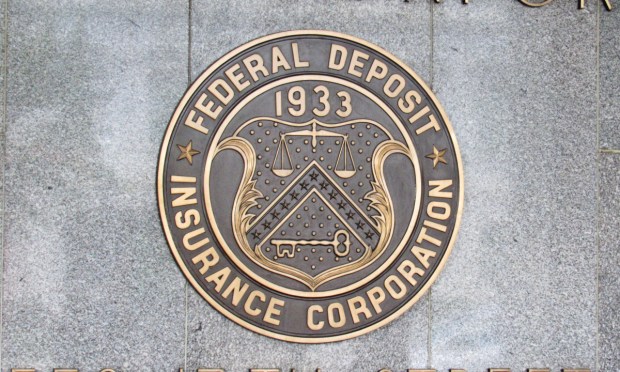
The aggregate net income for the 4,614 Federal Deposit Insurance Corporation (FDIC)-insured institutions during the third quarter was $68.4 billion, representing a 3.4% decrease from the previous quarter.
The decline in net income can be attributed to lower noninterest income and higher realized losses on securities, the FDIC said in a Wednesday (Nov. 29) press release.
The first and second quarters saw non-recurring gains from the accounting treatment for the acquisition of three large bank failures, which artificially boosted income, according to the release. Excluding these gains, net income would have remained relatively flat over the past four quarters.
“The banking industry continued to show resilience in the third quarter,” FDIC Chairman Martin J. Gruenberg said in the release. “Net income remained high, overall asset quality metrics remained favorable and the industry remained well capitalized.”
During the quarter, the banking industry reported an average return on assets (ROA) of 1.17%, according to the release. Additionally, the net interest margin (NIM) increased to 3.30% during the same period. This increase in NIM was driven by stable costs of non-deposit liabilities, despite deposit costs rising faster than loan yields.
Unrealized losses on securities increased by 22.5% from the previous quarter, totaling $683.9 billion, the release said.
Community banks, which make up a significant portion of FDIC-insured institutions, experienced a decline in net income compared to both the previous quarter and the year-ago quarter, per the release. This decline can be attributed to higher losses on the sale of securities and higher noninterest expenses, which offset higher noninterest income.
Loan balances showed growth, with total loan and lease balances increasing by 0.4% from the previous quarter, according to the release. Credit card loans and one-to-four family residential mortgages were the primary drivers of this growth.
Total deposits declined for the sixth consecutive quarter, decreasing by 0.5% between the second and third quarters of 2023, the release said. While interest-bearing deposits increased, noninterest-bearing deposits fell.
Overall asset quality metrics remained favorable, with noncurrent loans at 0.82% of total loans, well below the industry’s pre-pandemic average, per the release. The industry’s net charge-off rate increased slightly and is above its pre-pandemic average.
The Deposit Insurance Fund (DIF) saw an increase in its balance to $119.3 billion on Sept. 30, the release said. The reserve ratio of the DIF also increased to 1.13% in the third quarter.
It was reported on Nov. 16 that the FDIC will require the country’s biggest banks to refill the DIF, which was used to help uninsured depositors during the March banking crisis. The FDIC said in May that the fund had dipped from $128 billion to $116 billion following the back-to-back collapses of Silicon Valley Bank and Signature Bank.